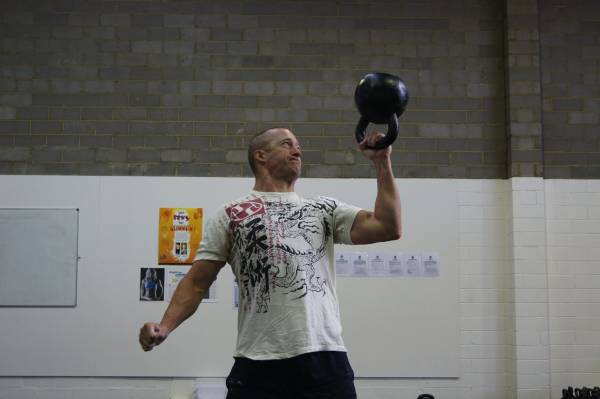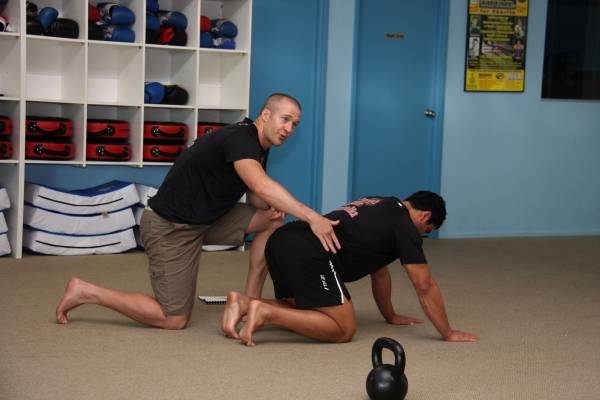We all know that the barrier to entry into the fitness industry is small. Unlike a tertiary degree, which may cost you tens of thousands and a few years, obtaining a personal training qualification may take just a couple thousand dollars and a few weeks. And that’s if you actually get a certification at all, as many trainers operate without one.
We all know that the barrier to entry into the fitness industry is small. Unlike a tertiary degree, which may cost you tens of thousands and a few years, obtaining a personal training qualification may take just a couple thousand dollars and a few weeks. And that’s if you actually get a certification at all, as many trainers operate without one.
Because of the lack of control to get into the industry, there is also little control within it. Like with most things in life, the vast majority is perfectly fine with doing as little as possible, and the fitness industry welcomes them with open arms. Want a job where you can wear a T-shirt and runners? No problem. How about one where most customers, having failed several times beforehand, don’t actually seem to care about paying money and getting any actual results?
But at some point, in order to actually make a decent living, one of two things is going to happen. You will either quit and go find a “real” job or you will realize you need to pull your finger out and start actually acting like a professional in any field.
It’s at this point that I get to meet quite a lot of trainers as they look for a solid, professional group to be involved with and take their education and business to the next level – by attending RKC. But unlike many fitness groups, the RKC doesn’t accept mediocrity and does actually fail people if they don’t meet the standards. So, if you’re smart that means one thing to you – you need to prepare fully before your event. While the points below apply to RKC, they can just as easily apply to any event you sign up for that has even the slightest element of conditioning needed.
Four Ways to Get Set for Your Cert: 1. It’s Better to Be Over Prepared than Under Prepared
The RKC is a long weekend. So is SFG. So is Gym Jones. So is Spartan Group X. So are any number of events from Spartan races to Ironman to Gran Fondos. There is no worse time to realize you are under prepared than in the middle of the event and be left trying to survive for the rest of it.
At my RKC, I found out exactly how important grip strength was at the end of the second day. Leading into the event I had only trained with competition grade bells. For people unfamiliar with kettlebells, that means the handles were thinner, which requires less grip. By the end of the second day, my grip was shot. My hands were fine, but my grip was done. I couldn’t even turn the handle on the door of my hotel room. Instead, I had to push it down with my elbow while bumping the door open with my hip. The next morning it was worse. I couldn’t even manage to hold a fork reliably in my hands and kept dropping breakfast all over myself, as well as the fork.

But while my grip was shot, my body was fine. I was never left so exhausted from a drill or workout that I was unable to concentrate on taking in the next part of the lesson. Because the technique testing is at the end of the three days you will be tired and sore when you get to it. That’s life. Often you will be tested most when you least want to be. But as a trainer you need to be able to demonstrate perfect form at the end of a day regardless of how tired you are. Being in great shape will help you not just get through the weekend, but also make sure you still have enough in the tank for perfection when you get to testing at the end. You simply cannot be too conditioned.
Four Ways to Get Set for Your Cert: 2. See an RKC Prior to Your Cert
Unlike most of the fitness industry, the RKC has actual standards. We don’t call lifts “floor to overhead.” We would call that snatching and we have a bullet point list of what safe form for that lift entails. Failure to maintain that standard during the test will see you fail the technique testing. For many people, that means they need to severely tighten up their form and their understanding of what their body is doing at any given moment – from the time they touch the handle of the bell in preparation of the lift, during the lift, and until they release it at the finish of the set.
The number of people I have seen pass an RKC without having previously spent time working with an RKC is incredibly low. In the same vein, before I did Ironman, I spoke with a number of experienced Ironman athletes and got a feel for what the day was like. I spent time on forums. I read. Doing so helped me understand exactly what I was going to do and helped me prepare. Don’t risk winging it, and then be upset when you fail to meet the standards.

Four Ways to Get Set for Your Cert: 3. Little Things Count
If you’re into minimum effective dose style training and think a thirty-minute session with some swings and a few snatches will be enough, then I have bad news for you. There’s no way that is going to be enough to get you through the death by swings that day one is.
The funny thing about doing a lot of swings is that you find yourself rubbing your hands in places you’d never had problems before. So, the only way to toughen your hands up enough for the event is to train hard and put in some longer sessions. When I run RKC preparation workshops, we usually warm up with 400 swings (10 x 10 two hand swings at snatch weight, 10 x 10/10 one hand swings at snatch weight, and 10 x 10 two hand swings with something heavy like a 40+kg bell for guys) Then we train for another two hours.
Over a few sessions, the students’ hands become nice and tough, and when it comes to the critical weekend, they find that they handle the massive volume just fine. This approach should stop you needing to buy the world’s biggest roll of tape, wearing socks on your hands, or super gluing your skin back together to get by.
But these little lessons are in everything. In long distance racing, it’s not uncommon to develop bad reactions to certain foods even if you’ve been fine with them in training. Through hours on the bike and then onto the run, all with your heart racing and stomach struggling to get enough blood flow to do its job properly, you need to get food down. I made sure to alternate gels on the bike using different flavors, and then have different flavors again for the run.
I also wore my race gear once or twice in training to make sure there were no stitches that would rub and that it was comfortable for hours at a time like I needed it to be. Don’t wear brand new shorts, shirt, or shoes for an event. You will likely pay for it when the shorts rip as you squat, the shoes give you blisters, and the shirt proves uncomfortable.

Four Ways to Get Set for Your Cert: 4. Start Your Preparation Early
For my RKC, I ended up having a single week of training to spare as I was struggling to get my snatch test number until right before the event. These days I leave nothing to chance and most of my clients would be able to pass the snatch test as far away as six weeks from an RKC.
It is far better to cruise into the event than try to desperately cram as much fitness into your body as you can in a short time frame. In my experience this leads to injuries. If you’ve read my Ironman journal, you can see the trend of pushing hard to gain fitness over a relatively short period and see the list of injuries – constant calf and Achilles problems – over the eight months leading into the event. As it turns out I would have done better at Ironman if I had given myself two years to prepare and not just one.
Like I said above – you can never be too conditioned, too strong, or too fit. Take your preparation seriously and you will not only enjoy the weekend more, but you will get a lot more out of it, as you will be able to take instruction better rather than gasping for air like a fish out of water between sets.
Photos 1&4 courtesy of Dragon Door Australia.






